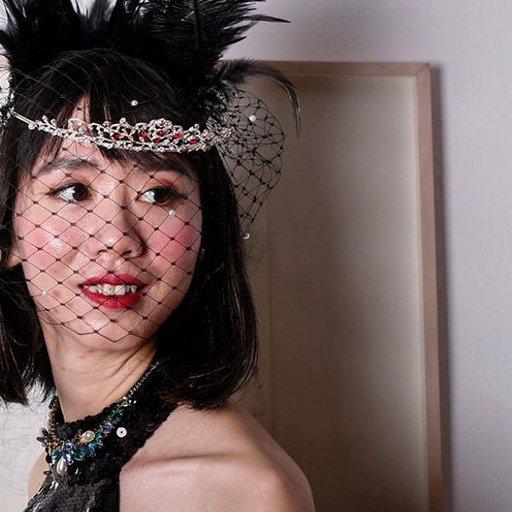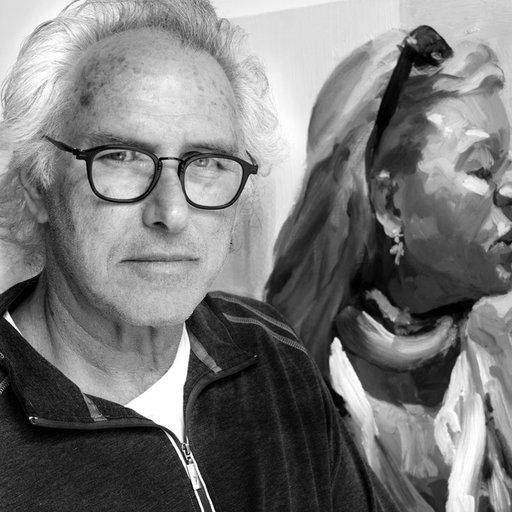Paul Mc Carthy's career, as Hayward Gallery Director Ralph Rugoff notes in Phaidon's Contemporary Artist Series book on the artist , "defies easy categorization".
Along with a few contemporaries such as Bruce Nauman and David Hammons, the Californian artist has relentlessly pursued a far-ranging, almost nomadic approach to making art, embodying a principle of perverse admixture, where diverse elements are blended in a seamless collage – a style akin to that of the theme park universe, where reproductions of history’s monuments promiscuously intermingle in a landscape of casual delirium.
According to Rugoff, McCarthy’s art is "not really concerned with breaking taboos as a general operating principle, say in the knee-jerk manner of an avant-gardist, dead-set on affronting bourgeois morality.
"From early on in his career, his focus on sex and violence has been framed within an abiding thematic context: the symbolic violence of our social conditioning by the family and the mass media. To some extent, these terms can be conflated – it is the intersection of family and media image that McCarthy’s art explores. His taboo-smashing thus occurs in a distinctly post-Pop framework. More specifically, it is a framework closely related to childhood and developmental modelling as imagined in popular culture. McCarthy’s performances and videos from the 1970s and 1980s are littered with references to children’s television shows, with McCarthy often assuming the persona of a clownish and infantilized host enacting a deranged educational programme. More recent installations have reworked classic children’s stories such as Heidi and Pinocchio; recycled stage sets from family sitcoms; and in a series of giant toy-like sculptures, the artist has conjured visions of a nightmarish Disneyland."
McCarthy started making videotapes in the early 1970s. The first ones were around perception and illusion. He would place the camera upside down, or would use mirrors. At the same time he also started making pieces that were performances in the sense that he would be in front of the camera - usually working in an empty studio primarily by himself with the camera. They were often repetitious and intuitive. He would do some things and record them. One piece, Ma Bell, was one of the first actions he did which involved liquids, in this case, motor oil. "I had not planned to make the piece," he tells interviewer, art historian, and curator, Kristine Stiles in Phaidon's Contemporary Artist Series monograph. "It was spontaneous. It was the first tape where there was a persona." Here is that interview in full.
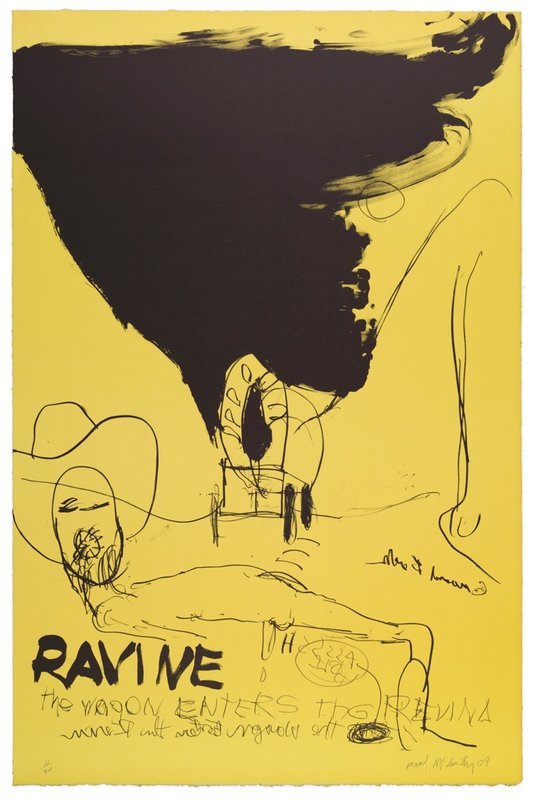 Untitled 16 (Ravine, The Wagon Enters The Revina, Yellow), 2009 by Paul McCarthy
Untitled 16 (Ravine, The Wagon Enters The Revina, Yellow), 2009 by Paul McCarthy
KRISTINE STILES: This aspect of performance is illusive. For although the actions are experiential and being produced for sensations, they are also part of the object being made. What does it mean that an action is equally an object? You arrive at ‘something’ that you’ve been waiting and looking for – but also not waiting for (because you have also just been doing actions for the sake of the action itself) – and you then try to recover it by recording it.
PAUL McCARTHY: In those situations, I would most likely work in the studio alone. There wasn’t much else in the room, maybe a few objects that would become props for a tape. I would begin the actions. I would try a number of things and it might take minute to recognize something in it. All of a sudden I would key in on what it was, or I would recognize something in it. I was pretty aware that I was actively trying to find something, to put something on the videotape machine. I was experimenting – experimenting with the camera in the room, with the mind, with the props and the actions. I was experimentative when something seemed to happen. Then I would repeat it, refine it. The refining usually meant heightening the experience. I was interested in spinning, and I would often spin in front of the camera. I got to a point where I could spin for 30-40 minutes I would bang my outstretched hands against the wall, that helped me from getting disorientated and dizzy. The intuitive action that I kept returning to became an involvement. I still make actions and sculpture that relate to spinning.
STILES: The action I found most interesting in the Basement Tapes was Whipping a Wall with Paint. Some quality in that is present in all of your work and comes through in that particular tape. It is a lurking violence, a presence just on the verge of being unleashed, some kind of horrific terror or force.
McCARTHY: There were actually two tapes, one which you call Whipping a Wall with Paint and a second version which was Whipping a Wall and a Window with Paint. Passers-by viewed the action from the street, on the other side of the window. I splattered paint against the window for about an hour and in the end of the windows were covered. There’s paint everywhere – on me, on the floor. I would dip a big blanket into a large bucket of a mixture of paint and motor oil, pull the blanket out and slap it against the wall and the window. It was exhausting. The splattering of the paint or the residue of ketchup as in Bossy Burger or other pieces seem to suggest that an act of violence has happened.
STILES: Well in fact an act of violence has happened.
McCARTHY: Even the ketchup in Bossy Burger – the motor oil and the ketchup – both refer to the splatter of blood splatter, and also to paint.
 Santa Chocolate Shoppe, 1997 by Paul McCarthy
Santa Chocolate Shoppe, 1997 by Paul McCarthy
STILES: It’s not the direct, obvious, accessible metaphors that interest me so much in your work. What’s more compelling to me has to do with what isn’t there, this latent violence the manifestation of which is unclear as to what is will become. It may not become violent at all. I could become whimpering or sobbing or laughing. But it never quite gets expressed. I identified it in early and late work: in Whipping a Wall with Paint, in Bossy Burger and in Painter. This latent quality occurs most strongly when you are going in and out of doors, and around tables, and in between architectural settings. At these moments you seem to be meditative, almost performing a mantra-like action; latent with explosive material which may or may not be violent. So the metaphors of blood and all that are not so interesting to me. It’s what is just on the verge of being expressed, but never is expressed. This is why I wanted to think about the question of beauty in your work, to move from the manifest to the latent centre of your work.
McCARTHY: There is a kind of self-hypnosis involved in going from space to space or from menial action/task to menial action/task. I think that this work ‘latency’ implies that something is not resolved, but I do think that there are moments of resolution in my actions. Maybe symbolic resolution. They could relate to forgotten memories – my traumas or possibly someone else’s traumas. I seem to have a strong interest in placing the action in architecture and in using furniture: rooms connected to rooms, doors, windows and hallways. The house itself and the action of going in and out of its rooms. I always use tables; tables being a pedestal, something for me to stand on where I become figurative sculpture. The table is also a kind of altar, or a place for food preparation. I think it has to do with the search for a very basic kind of activity.
Untitled 15 (Pirate Boat), 2008 by Paul McCarthy
STILES: The world is ordered by those actions and those objects, and when I say ‘latent’ I don’t mean to imply a lack of resolve but a potential still dormant in the action that is compelling, in some ways terribly frightening, but also absurd, humorous and something that asks for empathy but is never overtly expressed.
McCARTHY: It reflects a kind of order, or cultural order. The action of the altar is primal; it involves the body. The altar becomes the place where the sack is cut open – the human sack is cut open – the body sack or the animal sack, the sack meaning the skin. We search for what can’t be gotten at in the interior of the body, cutting open the body to peer inside. In my work there’s a kind of theatre of that, and by theatre I mean the use of representation. The object becomes the body – it doesn’t need to be me, or even another human. I operate in a kind of theatre. I use objects to represent things, to represent thoughts and feelings. The objects don’t necessarily have to relate to themselves, they can be a symbol for something else. Ketchup can represent blood, it’s not necessary that it be blood. There were pieces that I made in the early 1970s where there was a sort of emphasis on concrete performance. Performance as a concrete reality, where you don’t represent getting shot, you actually get shot. That definition of performance as reality – as concrete – became less interesting to me. I became more interested in mimicking, appropriation, fiction, representation and questioning meaning.
STILES: I’d like to go back to the role of architecture in your work because your action within certain kinds of architectural settings suggest some personal memory of an actual experience that is no longer recoverable but which comes through most powerfully in architectural spaces.
McCARTHY: I think that in part my work does refer to my own private, forgotten or repressed memories and that I seem to play them out unconsciously in my actions. It is from those repetitions that I recognize them as existing, but I am not sure how they relate to me. Are they specifically my trauma, or someone else’s that I have witnessed either directly or through the media? But the definition of performance as only being real or performance as reality is limiting; psychologically or perceptually I found myself giving it a new reality. At one point I said that ‘my face on the floor is my face on your stomach’. It has to do with the view of performance as a reality. I’m proposing that reality itself can fluctuate. The bottle of mayonnaise within the action is no longer a bottle of mayonnaise, it is now a woman’s genitals. Or it is now a phallus. I suspect that that suspension of belief does exist within viewers, even though they cling to the conscious interpretation that ketchup is ketchup. I suspect that they’re disturbed when ketchup is blood.
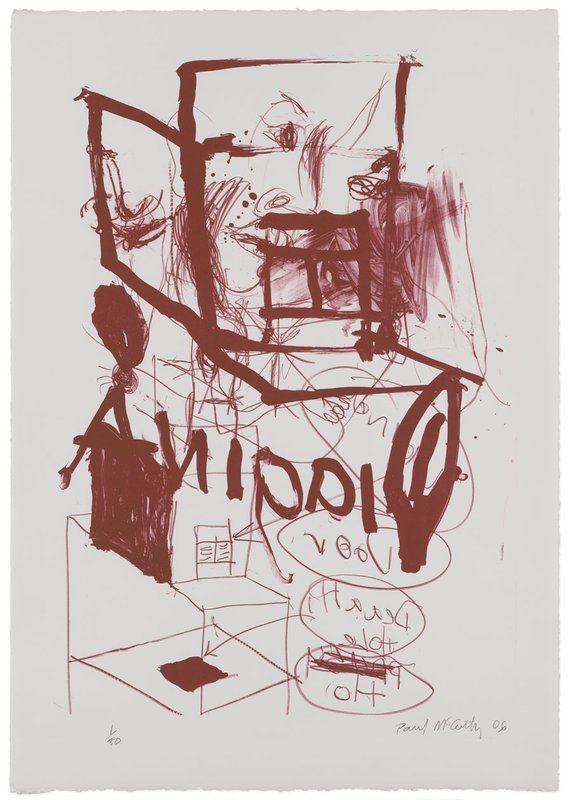 Untitled 4 (Viagina), 2006 by Paul McCarthy
Untitled 4 (Viagina), 2006 by Paul McCarthy
STILES: I don’t think so. I never lose sight of the names and functions of the objects that you use. I’m not disturbed in your work; I’m touched. You’re suggesting that there’s a suspension of belief, that it works metonymically: ketchup is red and viscous, and therefore it has a phenomenological continuity with blood. I have no argument with this. But the effect of your action hasn’t so much to do with the symbolic meaning (or transference of meaning) as with a connection to the fact that you actually do the action. The question then is: what does it mean for Paul to make an action that transforms a bottle of ketchup into a vagina?
McCARTHY: For me the actions go in and out of affecting me differently. It is this quality that I feel again and again when I watch the tapes, even from the beginning up until now, for 25 years of tapes. There’s this aspect of getting into something repetitive, going with that repetition to the point of discovery, and then sort of letting go in that space. I never get involved specifically with the actual materials or making those kind of metaphorical or metonymical connections. Or transformations or representations of materials.
STILES: But you use the same materials repeatedly, so clearly the repetition in the performances is significant. But it’s not where the content of your work lies for me. I think the repetition, the objects, the characters, the bodily fluids are all a kind of camouflage, a mask , but more than a mask. They function as a smoke screen that detracts the viewer from the latent content in your work.
McCARTHY: The repetition lets you know that they are specific to the actions. I’ve often thought that the actions between 1972 and 1993 were dependent on liquids. I’ve often thought that particular types of objects – holes, bottles – appear all the time in my work. Architectural references are all obsessive in the same way. And the masks. The mask in the sense of it being an environment, almost an architectural environment. When my head is inside the mask, I’m peering out of these holes which are an inch or so away from my face. My voice changes inside the mask; it’s hard to breathe. I also make this connection of the mask to a camera. The eye hole of the mask is similar to the lens hole of the camera or the frame of the picture. You can’t see beyond the frame of the hole. I’ve made this hole metaphor as a metaphor of cultural control, what you can see and what you can’t see. That wasn’t something that I recognized at the beginning but which grew out of performing. I started doing those performances and constructing pieces around the eye, the idea of a hole, of looking through something. This was both a cultural metaphor and a personal or private
metaphor. And that was one of the things that was interesting to me about Duchamp’s Etants Donne…, that you look through the two holes and you can see only what he wants you to see. You can’t see anything beyond the frame of the hole. You can’t see what the object looks like above or below the frame of the hole. You can only see what the hole allows you to see. My early black paintings, from 1967, were done as doors. I understood all Western art in relationship to mirrors, windows and doors. Painting has always had a reference to architecture.
 Untitled 6 (Badeath), 2006 by Paul McCarthy
Untitled 6 (Badeath), 2006 by Paul McCarthy
STILES: A lot of your activity goes on in between architectonic space. This discourse is one of framed space, but a frame (unlike the hole) that is certain. Curiously, it is also a space where you do a lot of talking. For example in Painter, you say things repetitively: ‘I can’t do it’; ‘I think I will’, and so forth. At the same time it seems to be a space of contemplation for you.
McCARTHY: It may have to do not only with my conscious and unconscious memories but also with my difficulty in accepting something versus nothing, existence
versus the void. They may be related, they are related. The use of architecture is associated with constructing a place, framing, objectively and existence, ordering, substitutes, necessity and absurdity.
STILES: You’ve told me in other conversations that Beckett is really important for you. There are many similarities between Waiting for Godot and aspects of your work.
McCARTHY: In Waiting for Godot and in Bossy Burger there is a sense of being trapped, having no way out. When I did Bossy Burger, I did drawings during the actual performance and during the taping session. I made aerial views of the set-pathways through the set going into one room, down the hall, through the door into another room. I am making a sculpture now of three buildings – a saloon, a bunkhouse and a tepee – with animate characters in each building. Before I placed the inanimate figures in the salon, I made a film inside the actors. The film has no precise narrative; it is a series of shots, repeated scenes. In Bossy Burger, the Alfred E. Neuman character never leaves the architecture. I envisioned him as an entrapped person, trapped within the architecture. And the house represents a trap; the earth is a trap. He may stick his head out but he immediately pulls it back in. He uses the door to spank himself. When I was doing that piece I was really aware that he would not leave the architecture, and that the architecture existed in a void. And in Pinocchio Pipenose Household Dilemma, Pinocchio never leaves the house. The house is the dilemma: the dilemma is our inability to understand. The dilemma is so alien that it smells of insanity. Paranoia and psychosis breed in this sort of pool of milk, a pool of milk as a metaphor for this existential dilemma. It becomes very much associated with the reality within a house was absurdity. The construct of reality as absurdity.
 Coppermeal 3, 2005 by Paul McCarthy
Coppermeal 3, 2005 by Paul McCarthy
STILES: I think you told me that Alfred E. Neuman, for example, in Bossy Burger, was the image of how you saw yourself as a child. Sailor’s Meat referred to your dad… McCARTHY: Not only references to Alfred E Neuman but to Howdy Doody and Charlie McCarthy. I shared similar characteristics with them. I identified with puppets and cartoon characters. The Alfred E. Neuman mask was bought the day of the performance. I went to the store and out of 20 masks, I just picked that one. And the same with the chef ’s outfit: I went to buy pots and pans and just bought a chef ’s outfit too. The character/persona of Alfred E. Neuman as a chef was unexpected and is related to chance and coincidence. Most store masks are in one way or another a personality, a stereotype of a film character or a politician.
STILES: There’s clearly a parody and critique going on (through all your work) of culture, popular culture in particular. I always laugh because of the farce. In Bossy Burgerit’s of the Galloping Gourmet; in Painter it’s of de Kooning. When I thought of asking you about your notions of beauty, or where that concept figures in your identity as an artist, it was because of the very critical position that you take in your art vis-à-vis Hollywood, Disney, television sitcoms, do-it-yourself entertainments. Something really cynical and angry becomes funny and ironic in your work. Your analysis of mass culture has to have a corollary with some quality you imagine that might be different from the corruption you ridicule. In order to understand something as abused, one has to be able to imagine how it would be if it weren’t abused. Your work is about corruption, a discourse on everything that corruption is not. That’s why I’m trying to find a way to talk about - to talk through – your smoke screen. We both acknowledge that we understand that the words we use for beauty have no value. That’s why you create another language, a language of abuse used to discredit the language which has been abused.
McCARTHY: I mistrust a lot of what has been conjured up in this culture. At one point I mistrusted reality completely. It occurred in 1971-72, when suddenly the
experience of being confronted with my existence was overwhelming. And that experience lasted for over a year. I was confronted with nothingness, why was there anything, why was there something, an object, an inanimate or animate object?
STILES: Why is it that performance seemed to be the best medium through which to engage yourself in those questions?
McCARTHY: It is a physical process, making an object while in character, in persona. It is related to everyday life, the passing of time. The mediums of action/performance and object/sculpture get confused. I am interested in images produced during the performance. My photographs of performances are more about painting than performance; they are images in rectangles to be placed on the wall or in a book. They are not the performance.
 Trump Posters, Woman’s Day March - Set, 2017 by Paul McCarthy
Trump Posters, Woman’s Day March - Set, 2017 by Paul McCarthy
STILES: But why does performance engage you more directly in the question of nothingness than object-making? Even as you speak about painting, you’re suggesting it was performative for you anyway. I think performance revitalized bodily discourse (corrupted by nineteenth-century academic representation and twentieth-century social realism) as one of the only authentic ways to address human experiences.
McCARTHY: It allows me intuitively to act out unconscious and conscious dilemmas in a character. In some cases the character reverts to a kind of dumbness, a sort of numbness. Also, my concerns are not always in relation to the viewer. I was also involved with auto-actions, semi-private actions, the camera being the primary channel to the audience I think it has to do with self-absorption, the self in the room, in the hallway.
STILES: Still, I think every action you make is an act of recuperation. The elements of your performance – masks, objects, foodstuffs – are tools to get you there Those spaces in between in which I’m so interested are sites of beauty – for want of another word – for you.
McCARTHY: You mean beauty in terms of recuperation. It has to do with what I cling to, something that points to the figure. Within the figure also exists the character which reverts to a kind of repetition that only points to some notion of survival. In Pinocchio Pipenose Household Dilemma, within the architecture of our surroundings exists the dilemma. For me there is no solution except for a kind of numbness, or to live with the acceptance. The undulating and convoluted repetition. The character is trapped: trapped in its surroundings.
STILES: In the sense that the character was trapped spinning or the character was trapped whipping the wall, now the dilemma is expanded into these very complex environments with character development, masking, and all of that.
McCARTHY: Yes, but the character within these just goes from dilemma to dilemma.
STILES: But that’s exactly why I focus on this in-between area. There’s a kind of knowing cognition going on in those spaces. The character is reflecting but he is also marking time. He loses his character quality because we’re not involved in who he is but in what he is doing instead. There’s a kind of purity in those in-between spaces, in such actions, outside of the vile dilemmas into which you cast your characters. The substance in your work isn’t in the blood, gore and holes.
McCARTHY: I would agree with what you just said, but I believe that substance also exists in a frantic expression. I don’t know whether I would recognize the architecture or these spaces which you are describing as any more critical than the character/ persona or the utensils.
 Coppermeal 2, 2005 by Paul McCarthy
Coppermeal 2, 2005 by Paul McCarthy
STILES: I’m not saying that there’s no substance in all of that. What I’m suggesting is that in those spaces the action is a negation. It’s a negation of all the things that the action deplores. The action itself is negation. So there’s a double negation going on. Then there are these interim spaces. They may have some of the same qualities as frenetic or repetitive action. But the in-between spaces represent a sort of halcyon moment where an alternative condition of Being takes place. There the mask somehow doesn’t matter, what you say somehow doesn’t matter. There’s some kind of recuperation in that space. It’s different, and it interests me because it’s there that I think you recuperate the corruption of beauty.
McCARTHY: A kind of beauty? How would you define beauty then?
STILES: Well, certainly not in any of the ways to which we’ve been acculturated. I would define it in terms of a constant hunger that human beings have for some kind of truth, a non-specific meaning. That’s what I was referring to as a latency that’s present in your work. It’s not a sign with signification that you can chart. It’s a floating kind of nonspecific, relational – but felt – meaning.
McCARTHY: I don’t know whether I associate beauty with truth. I mistrust the notion of truth – maybe beauty is recuperation, satisfied acceptance, as opposed to a fractured sensation and alienation. The notion of beauty is associated, I think, with the sublime – the sublime being tranquil. Do you think of beauty as associated with tranquillity?
STILES: No, with some value.
McCARTHY: That somehow it’s possible for humans to find value?
STILES: That is truth, and we’ve called it beauty. It’s not truth with a capital T, because who knows what truth will be for any experience. It’s relative. But you seem to enter that space of reordering things in those transits in-between the acts of negation.
McCARTHY: I don’t know what you mean; I don’t know whether I agree or disagree with you.
STILES: Gratuitous violence – which is what I think you do in your actions – is compelling to see, especially when it’s symbolic. Because we live amidst so much violence, we are compelled to watch ourselves watching ourselves. But gratuitous violence will never sustain us.
McCARTHY: I don’t agree with you regarding gratuitous violence. What might appear as violence in my work I understand not only to be a cultural-media mockery of film and television but also some kind of symbolic expression of my own fears and memories which are both unconscious and conscious. Mocked violence can be used as humour as well as something pathetic or tragic. Performance deals with issues that I am concerned with but it cannot deal with all issues. There are issues that exist within objects, where the discussion of inanimate and animate objects inanimate objects being the other – occur. I do not believe that all of my concerns can be played out in performance.
STILES: I don’t want to say only in performance, but it happens differently there, and the reception is definitely different from the response one has to a static or kinetic object. To view another human being – another consciousness – is a dramatic act of recognizing another presence, another subject. This never happens with viewing an object because performance has unique qualities of action and reception specific to the medium.
McCARTHY: Yeah, but the real ultimate difference for me between performance and the static object is not in perception, the point of view of another human. The real difference is the position of the performer, the person who acts. But I find hardly any difference in the observation of that act being made by another human or by a static object. I think that identification occurs with inanimate objects or projections and representations of animate objects, film for example.
STILES: We can invest inanimate objects with presence. But we can never see an inanimate object, no matter how much presence it’s invested with, as having subjectivity. The viewer/performer relationship is an exchange of subjectivities that can never occur with an object.
McCARTHY: But the major difference for me is that I am in it; that’s the importance. It involves a separation from my personality, and the act of creativity in general has to do with the separation from personality. And that’s what I find to be the engaging part of the act or art. The importance of performance for me lies within the fact that I’m the action itself. I think that within the creative action, and in the separation of personality, is a kind of beauty. But not in the sense of what we think of as beauty, but in a sense of substance of meaning.
STILES: So you can find a space for beauty in your work! That quality does not reside in how your work looks, but in what it is.
McCARTHY: In Pinocchio Pipenose Household Dilemma, the house inverts, the building actually turns upside down. I get turned upside down. It was videotaped to create an illusion of no gravity, almost like a space capsule. There are tunnels that I crawl through, and the tunnels resemble some sort of furnace vent or a hall way. The architecture of the body – or the body as architecture – is one thing that had struck me about Minimalism and late 1960s sculpture. They were often hollow, works by Tony Smith, Donald Judd, Robert Morris. I had done pieces that were made from furnace vents or ducts. One of them was an H-shape, like a capital H. It’s open at the four ends of its legs, and the part that was really interesting or important to me was not only that it was hollow and you could see that, but that the centre section of the H, the cross section, was inaccessible. The H itself was small enough that the human body could not crawl into the legs. You couldn’t experience the space of the cross member. Later I made a drawing of a piece that was about a two-foot cube; at the bottom corner of the cube was like a little arm or leg that extended out and then made a jut down. The cube was hollow, and this little leg was hollow. You could see the hollowness. That (visual) hollowness of the small leg indicated that the centre part was also hollow, but you couldn’t be in that cube. You couldn’t experience it physically or see it either. The title of that piece was A Skull with a Tail, the cube being the skull and the little leg the tail. There was a reference in the title to the body. I made one that was a cube, but on two perpendicular sides there were arms that just stuck out, right in the middle of the plane of the cube. That one was called A Skull with Ears. Then I made Pinocchio – a horse, a cube with a leg, a crooked leg just like A Skill with a Tail. I didn’t realize that the Pinocchio house was in the same shape. The house is a square, and then there is a hall that comes out of it. The furnace vent that Pinocchio crawled in come out of the cube, or out of the house, and makes several bends. It was the same kind of space, or the same kind of piece as A Skull with a Tail. Then I noticed that the H laid flat on the ground. The H was like a human being with two legs and two arms. I did the piece in San Francisco, Inside Out Olive Oil, where I actually made a body, a room in the shape of a body. I’m inside the body, inside the human figure, although there is no head, no lower arms and hands and no lower legs and feet.
STILES: When did you make A Skull with a Tail? Did it have any reference to the historical moment in the late 1960s? I’m thinking of Vietnam especially.
McCARTHY: A Skull with a Tail was in the 1970s; A Skull with Ears was in the 1980s. I don’t know how the whole situation of Vietnam affected my work. My early memories of Vietnam, from 1965 through 1969, were full of confusion, images from television, magazine and newspapers; images of death. I made black paintings in 1967 sometimes with images. I had referred to these paintings as doors and windows. Ad Reinhardt was in there somewhere as was Wally Hedrick, an artist in San Francisco. He painted all black paintings during the Vietnam War. I was really interested in the Beat Generation and poets especially in San Francisco. They were political and involved with political protest. I refused to register when I was 18, but they didn’t catch me until 1969. My case was referred to the courts. Art was defining itself within the alternative culture in a number of ways. There is a reference of the H as being a piece of formal sculpture but also an image of a dead body and of corporate architecture, of hallways and rooms. The metal of the H is violent.
STILES: I’m not saying that the work is associated with Vietnam. What I’m suggesting is that Vietnam was another site in which the body was threatened. That is clearly one of the principal metaphors in your work: the body as threatened and denigrated, unable to find its way into the knowledge of its condition. The black windows and the black doors that you made are an interesting visualization of that problem and paradoxical in that windows and doors are things one may see or go through into another area. To blacken those out suggests one has no access through the very things that should provide access. The same thing holds true about the description you gave of A Skull with Ears and A Skull with a Tail. They represent a place where one can’t go. This inability to know – through the metaphorical vehicles of knowing (windows and doors) – and the death of the body (within an architectonics of death) are the basic substance of your work. Vietnam – as an historical manifestation of some of these ideas – would have been yet another kind of analog (from the socio-political frame) that could have provided another layer to the aesthetic and experiential one in which you were already involved. The titles are also very significant.
McCARTHY: Yes, I agree. A Skull with a Tail suggests that we can’t know. I remember thinking of those works in terms of the soul that we couldn’t access – the soul that occupies the head. At the same time it was a cube, a minimal cube, and they were painted black. They were almost direct references to Tony Smith’s sculpture.
STILES: Which he titled Die!
McCARTHY: I never thought of that, but the H was also titled Dead H.
STILES: Many of these metaphors of spaces that exist but are inaccessible are classic signs of trauma.
McCARTHY: Maybe that doesn’t surprise me. I think my work deals with trauma, my experience of trauma, physical/mental trauma/abuse. I act as a clown stuffing and feeding orifices, enacting body hallucination – size changes, weight change. Reality is force-fed: eat this. My actions are visceral; I want it to be visceral. The props of ketchup and mayonnaise are the right consistency for the action to be visceral. They cover the objects in a kind of body lubricant. They are force fed into the mouth, the eye, the asshole. These images play themselves out in my work.
STILES: I was very fascinated with Ma Bell because of my interest in artists whose performances include working with books. How did you come to do that particular piece? Why the phone book?
McCARTHY: In the studio there was a stack of telephone books, and I made a couple of pieces with them. The building was in the middle of L.A. It was empty and had previously been the induction centre for World War II and Vietnam. It still had lines on the floor – follow this line to the psychiatric testing area, you know…
STILES: So my question about Vietnam was not so empty.
McCARTHY: Yeah, I ended up on the top floor of this building. It became my studio. The building was in the shape of an H, which was a coincidence.
 A spread by Paul McCarthy's Phaidon Contemporary Artist Series book
A spread by Paul McCarthy's Phaidon Contemporary Artist Series book
STILES: You didn’t remember that before now?! The building you were in, which was a former recruitment centre for the wars, including Vietnam, was in the shape of an H!
McCARTHY: It is very odd that the building was in the shape of an H. Yeah, I didn’t remember.
STILES: What was in the centre part?
McCARTHY: Elevator shafts! There were windows all the way around, looking out onto downtown L.A. and everything. The building had very few objects in it, but there were things around like stacks of telephone books. I started making pieces with the telephone books because they were there. I said to a friend of mine, ‘I’m going to do something with the telephone book’. It all sort of clicked into this thing, pouring oil onto these pages of the telephone book in this crazy lab, you know, this insane lab. And being at the top of this building, kind of on top of L.A., almost like putting a curse on L.A.. The book itself had everybody’s name; everybody was in the book. I was pouring oil over them with this sort of primal goo. It was almost as if I was mixing a recipe: flour, or food, oil – like baking a cake or something.
STILES: When I saw this tape, I associated it with Judeo-Christian traditions: Jews being the people of the word, or book, and Christians being the people of the body. I associated how the name in the book comes to stand for the body. You performed a kind of effacement. I saw that piece not only as performative in terms of your action, but also in terms especially of what the telephone book might represent as words for bodies, multiples of bodies. The telephone book has a kind of corporeal existence in absentia, that was redoubled in the performance itself. The telephone book itself was performative. So the action of defacing also obliterated the performance, a kind of self-obliteration in the obliteration of the book. The relationship between naming (or language) and the body seems to be very much in keeping with one of the central performative qualities in all your work which is to destroy the performer in name and body. Or, perhaps it is the experience of the viewer who is submitted to watching the destruction of the performer again and again, either in his inability to speak, his self-abuse, his abuse of other things (which is a kind of self-abuse) and so forth.
McCARTHY: One thing about that piece is that it was the first piece I did as a sort of persona, as a sort of character. I imagined myself as a kind of hysterical person.
STILES: What was it about the situation that compelled you to assume a persona?
McCARTHY: Prior to that performance, most of the pieces had been very task oriented. But that was the first piece where I felt I was actually assuming a character, a persona.
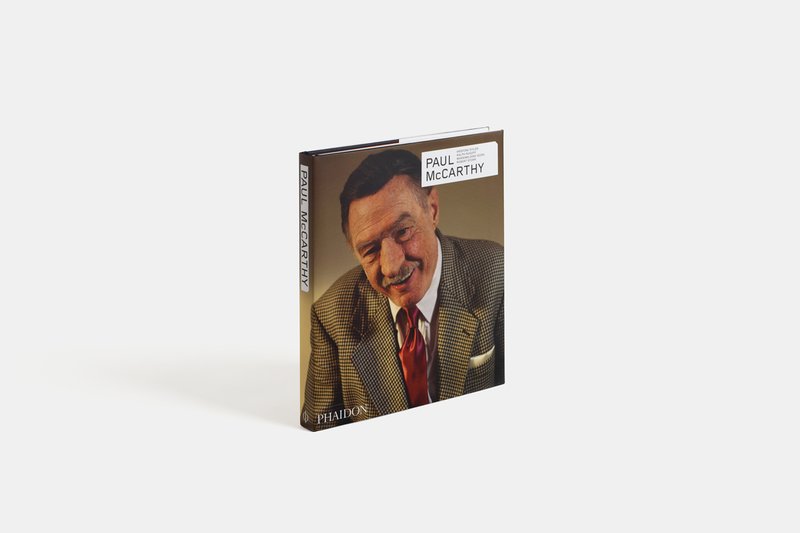 Paul McCarthy's Phaidon Contemporary Artist Series book
Paul McCarthy's Phaidon Contemporary Artist Series book
STILES: Why did you performing in 1983?
McCARTHY: I don’t know. The situation in performance art had changed a lot. I wasn’t as interested in a lot of the dialogue of performance art. I went back to doing a lot more drawing. I wanted to make wax figures, wax sculptures, almost replacements of myself. It didn’t really translate until years later, with Bavarian Kick in 1987 and The Garden in 1991-92. Performance was really wearing me down psychologically. I wanted to get a real distance from it and think about it in another way. There was no money. It seemed as if I should back away. I wasn’t sure it was so healthy for me. Performing for an audience did affect my actions, but I was also interested in what happens when you put a frame, a camera window, in front of the performance and the viewer watches it through this window. You change the situation that way. You hide parts of what they could see and you control it. It reflects on culture’s use of control.
STILES: I’m very much aware of the camera’s presence, especially its shadow, in certain aspects of Bossy Burger where it is visible while showing the kitchen and some nebulous spaces that appear to be hallways, doorways and exteriors – interim spaces. Anthropologist Victor Turner theorized that certain kinds of interim spaces are liminal and operate as a site of recuperation, an escape valve wherein activities not permitted anywhere else in society may occur. Liminal space functions as a kind of exhaust for pent-up, taboo and impermissible acts. Rituals are performed within liminal space, on the margins of society, where all kinds of things were permitted that need to be addressed in the culture, but aren’t addressed in any other way.
McCARTHY: Along with the H-shaped sculpture, A Skull with a Tail, and A Skull with Ears, there was a metal cube I wanted to make with louvers on four sides, like an air conditioning unit or a swamp cooler. It was a cube that vents air, and it was meant to look like it was venting interior air. I had referred to it as the act of venting. I wrote a poem in the 1970s called Sailor’s Meat Vented in which I described my actions as ‘venting’, that I was ‘venting’. I was thinking about venting trauma, and that art could act as event.











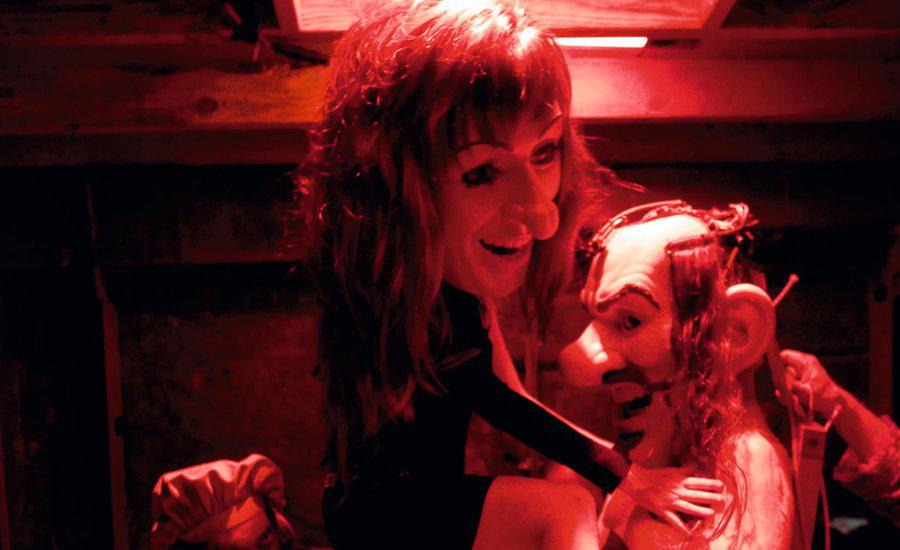
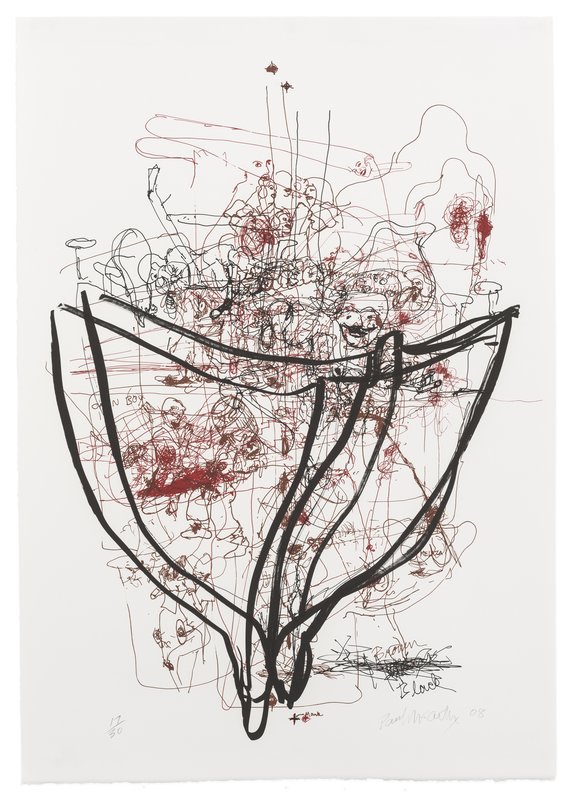
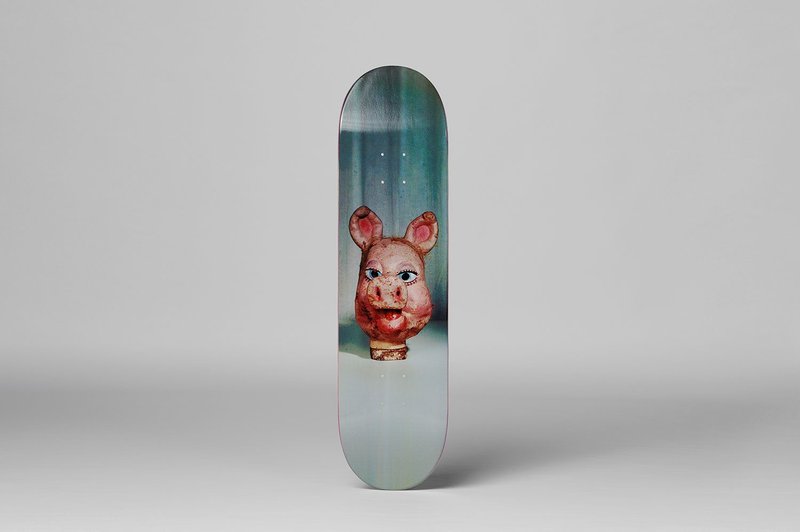
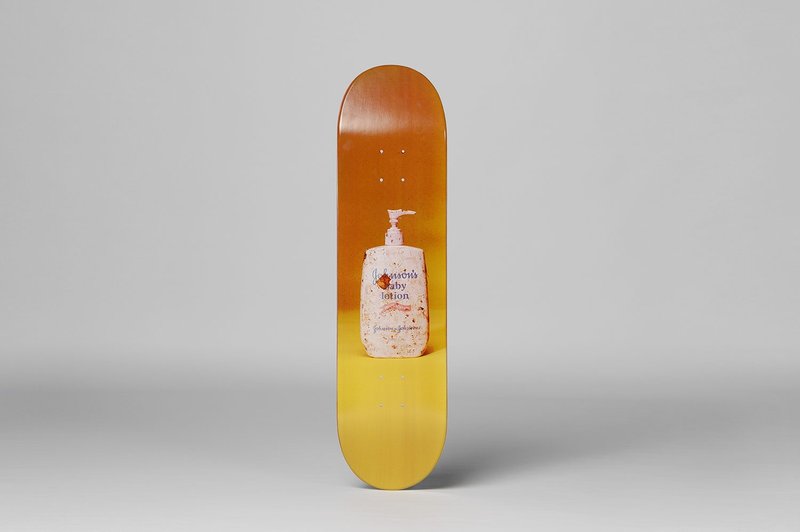 Lotion, 2014 by Paul McCarthy
Lotion, 2014 by Paul McCarthy





